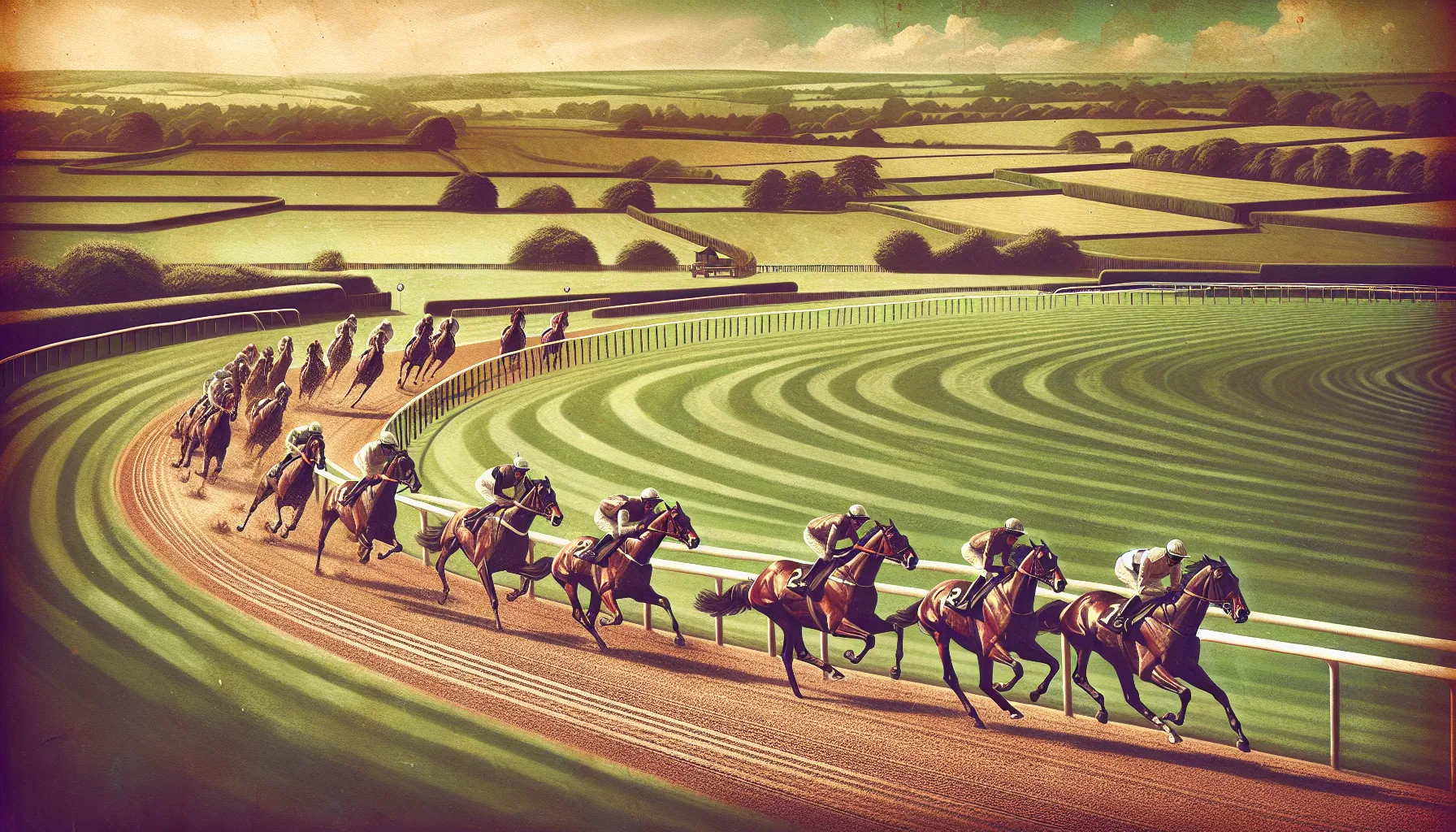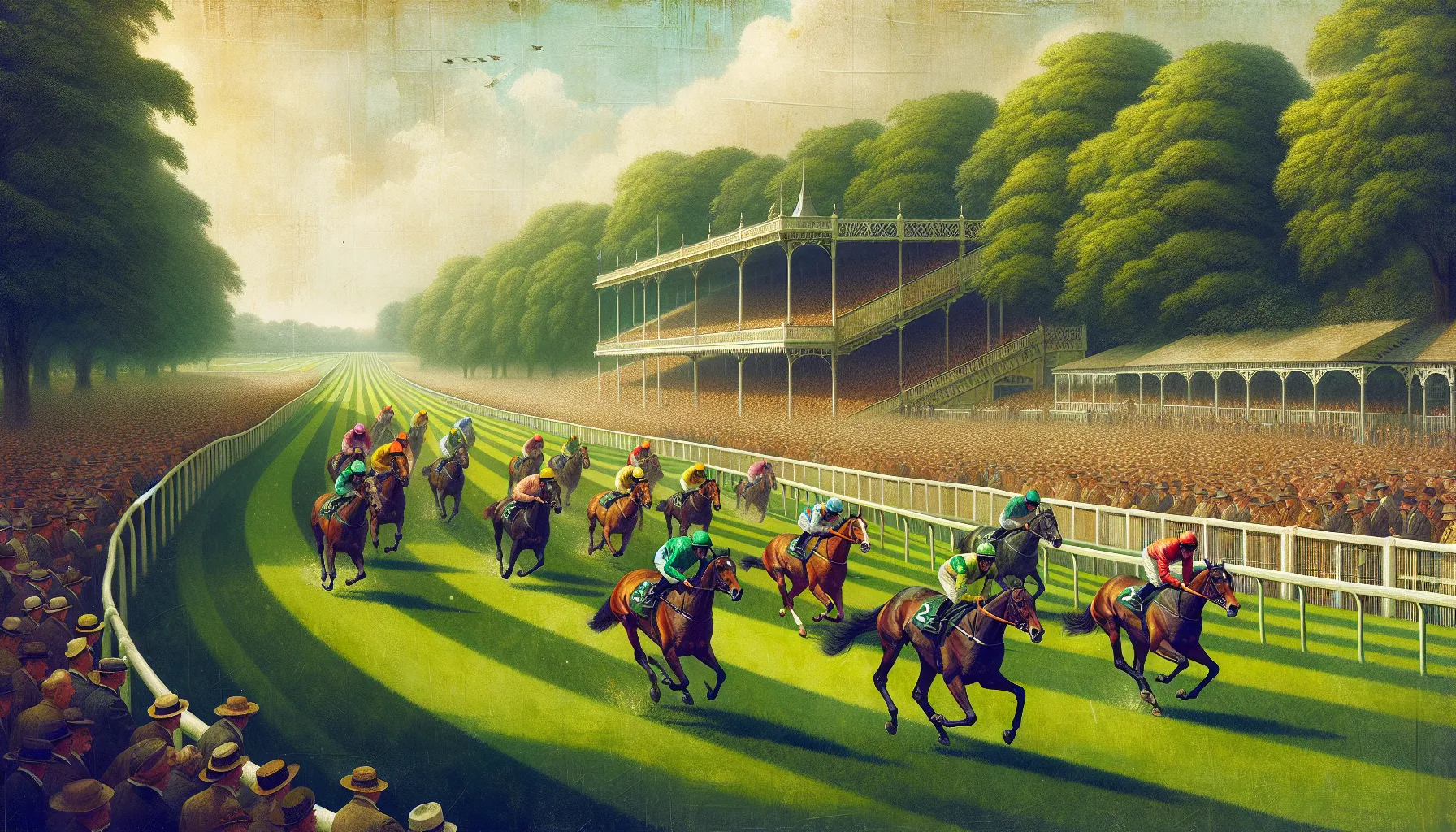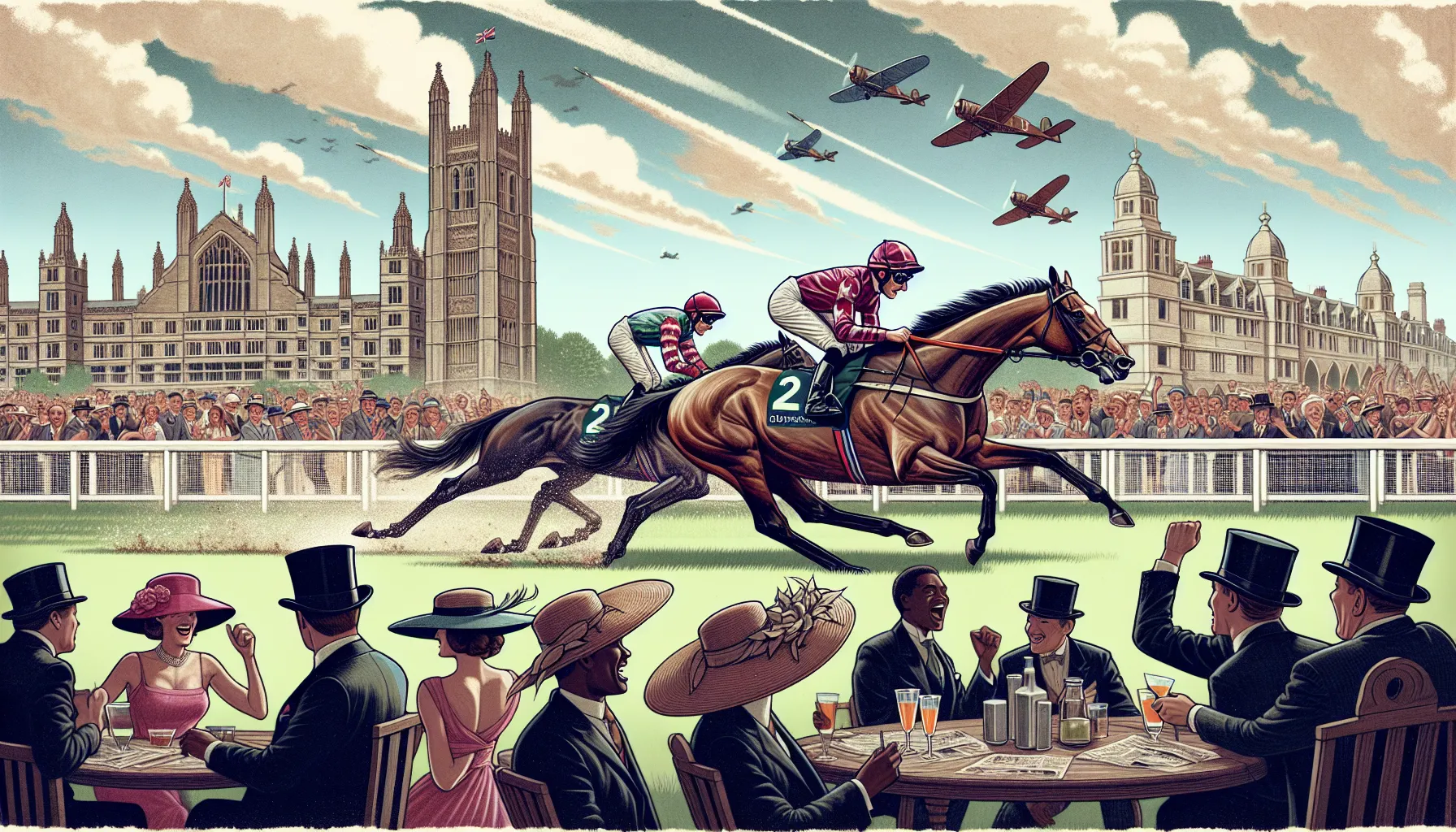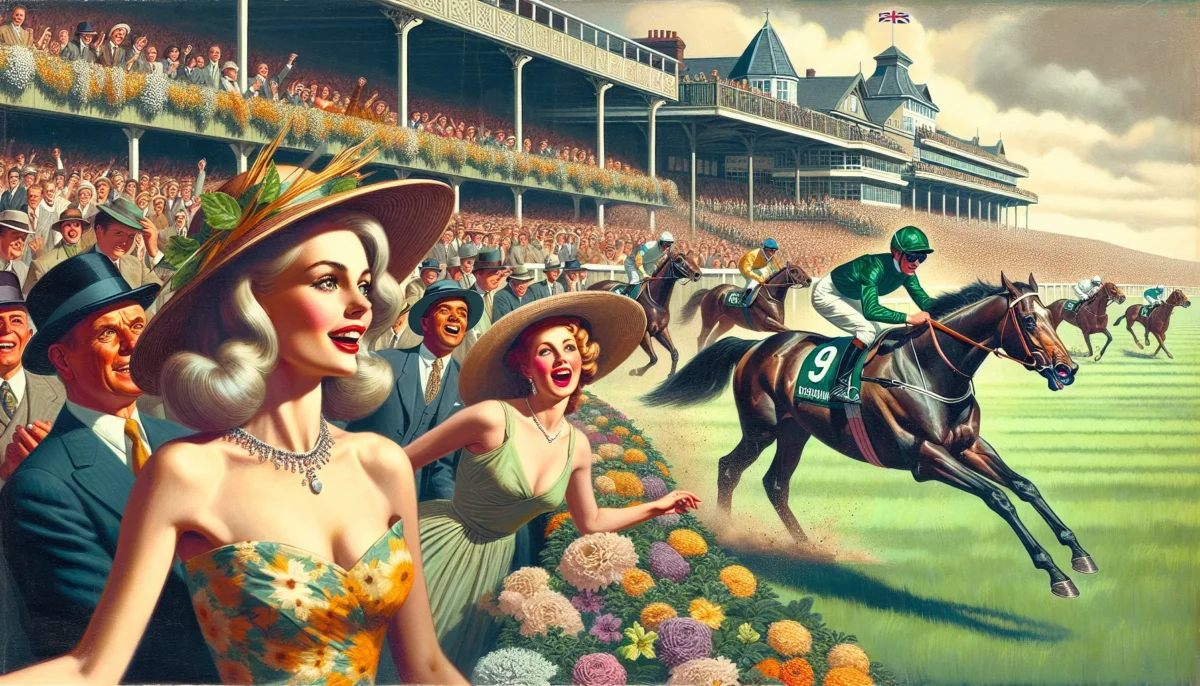When you think of horse racing in the UK, one city stands out as the heartbeat of this thrilling sport. Known for its deep-rooted history and passion for equestrian excellence, this city has become synonymous with world-class races and a vibrant racing culture. It’s a place where tradition meets excitement, drawing enthusiasts from around the globe.
Whether you’re a seasoned racing fan or just curious about the sport, this city offers a unique charm that’s hard to resist. From iconic racecourses to prestigious events, it’s the ultimate destination for anyone looking to experience the thrill of horse racing up close. So, which UK city claims the crown as the epicenter of this exhilarating pastime? Let’s dive into what makes it so special.
The UK City Known For Horse Racing
Newmarket, located in Suffolk, is widely recognized as the heart of horse racing in the UK. It has a storied history dating back over 350 years, making it a cornerstone of the sport. The city hosts major racing events, like the 2000 Guineas and the July Cup, which attract top trainers, jockeys, and horses from across the globe.
The city features two renowned racecourses, the Rowley Mile and July Course. The Rowley Mile is known for its long straight track, ideal for flat racing, while the July Course offers a scenic setting for summer fixtures.
Newmarket is also home to more than 50 training yards, including world-famous operations like Godolphin and Shadwell. Its extensive gallops, covering 2,500 acres, are integral to the preparation of elite racehorses.
Key institutions, such as the National Horseracing Museum and the Jockey Club, further cement Newmarket’s importance. These organizations preserve racing heritage and oversee crucial aspects of the sport.
With its unique combination of history, facilities, and events, Newmarket solidifies its status as the premier city for horse racing in the UK.
The History Of Horse Racing In The UK

Horse racing in the UK has deep roots, with traditions shaping the sport into a defining element of British culture. Its evolution highlights key places and figures that have left a lasting legacy.
Origins Of The Sport
Horse racing gained prominence during the medieval period, with records showing organized competitions from the 12th century. The introduction of Arabian horses by crusaders greatly influenced the development of racing breeds. By the 16th century, royal interest in the sport grew under Henry VIII, who established breeding programs to enhance racehorse quality. Over time, horse racing became a structured activity, featuring purpose-built tracks and regulated events.
The Rise Of Newmarket As The Horse Racing Hub
Newmarket’s association with horse racing began in the early 17th century during the reign of King James I. The town’s unique terrain attracted the monarchy and noble patrons, solidifying its reputation. By the mid-1600s, Charles II institutionalized the sport in Newmarket, attending races regularly and founding annual events like the Town Plate. This royal endorsement elevated the town’s status, making it the center for breeding, training, and racing. Several establishments, including the Jockey Club founded in 1750, reinforced Newmarket’s dominance in shaping global racing standards.
Why Newmarket Stands Out As The Horse Racing Capital

Newmarket holds an unparalleled position in horse racing, earning its title as the sport’s global capital. Its unique combination of elite racecourses, world-class training facilities, and deep cultural ties firmly establishes its prominence.
Renowned Racecourses In Newmarket
Newmarket features two distinguished racecourses—the Rowley Mile and the July Course. The Rowley Mile, recognized for its 1-mile and 2-furlong straight track, hosts iconic events like the 2000 Guineas and the Cesarewitch Handicap, focusing on flat racing excellence. The July Course, renowned for its scenic surroundings, presents notable races like the July Cup, offering summer fixtures that attract global audiences. Together, these venues form the backbone of Newmarket’s thriving racing calendar.
Training Facilities And Stables
Newmarket is home to over 3,000 thoroughbreds trained across 50+ training yards. Facilities like the legendary Godolphin Stables and Warren Place have produced countless champions. The surrounding 2,500-acre gallops provide varied and top-tier surfaces, essential for conditioning racehorses. This extensive infrastructure ensures Newmarket continues to attract owners, trainers, and breeders worldwide.
Contribution To Equestrian Culture
Newmarket’s contributions to equestrian culture extend beyond racing events. Institutions like the National Horseracing Museum preserve the sport’s rich history through exhibitions and artifacts. The Tattersalls Auction House, established in 1766, plays a key role in the global bloodstock market by hosting premier sales. Coupled with the Jockey Club’s regulatory oversight, Newmarket encapsulates every aspect of horse racing, making it an indispensable part of the sport’s legacy.
Famous Horse Racing Events In Newmarket

Newmarket is synonymous with iconic horse racing events that celebrate its rich equestrian heritage. Two of the most notable events are detailed below, drawing thousands of spectators and participants annually.
The 1,000 And 2,000 Guineas
The 1,000 and 2,000 Guineas mark the start of the British Classic flat racing season. Held annually in late April or early May at the Rowley Mile, these races attract elite contenders. The 2,000 Guineas spans one mile and features three-year-old colts and fillies, while the 1,000 Guineas is exclusive to fillies of the same age. Both races have produced legendary winners, such as Frankel (2011) in the 2,000 Guineas. Their historic relevance and high stakes make them pivotal events for both bettors and enthusiasts.
The July Festival
The July Festival offers a stunning combination of top-tier racing and summer festivities. Hosted at the July Course over three days in mid-July, it includes the prestigious July Cup, a six-furlong sprint that crowns one of the season’s fastest horses. This event blends thrilling competition with a sophisticated social atmosphere, featuring fashion contests and entertainment. Attendees often consider it a highlight of the sporting summer calendar, further reinforcing Newmarket’s reputation as a global racing hub.
Exploring Horse Racing Beyond Newmarket
Although Newmarket is the heart of UK horse racing, other cities also play significant roles in the sport. These regions contribute to the country’s racing heritage and offer unique experiences for enthusiasts.
Other Notable Horse Racing Cities In The UK
York stands out for its historic York Racecourse, regarded as one of the best in the country. Hosting major events like the Ebor Festival and the Juddmonte International, York combines a modern venue with historical charm. Its role in flat racing makes it a key destination for fans.
Cheltenham is synonymous with National Hunt racing, hosting the prestigious Cheltenham Festival each March. This event features iconic races such as the Gold Cup and brings together top trainers, jockeys, and jump racing enthusiasts from across the globe.
Ascot is renowned for the Royal Ascot meeting, a five-day spectacle attended by members of the British royal family. Known for its fashion, high stakes, and world-class flat racing, Ascot maintains a central spot in the UK’s horse racing calendar.
Aintree, near Liverpool, is home to the Grand National, one of the world’s most famous steeplechase events. This tough and grueling race continues to attract global attention due to its challenging course and historic significance.
Newmarket’s Legacy On The UK’s Equestrian Scene
Newmarket’s influence extends beyond its borders, shaping equestrian culture nationwide. As the birthplace of organized horse racing, its training methods, breeding practices, and institutions set benchmarks still followed across the UK.
The Jockey Club originated in Newmarket and now oversees British racing, ensuring integrity and governance. Tattersalls, the world’s oldest bloodstock auction house, pioneered horse sale practices imitated worldwide.
Newmarket’s focus on research and healthcare for horses, through resources like the Animal Health Trust (formerly based in the town), contributed to advancing equine science and care. These institutions reinforce the town’s role in maintaining the UK’s global leadership in horse racing.
Conclusion
Newmarket’s unparalleled connection to horse racing makes it a destination that every enthusiast should experience. Its racecourses, training facilities, and cultural institutions reflect a legacy that has shaped the sport globally. Whether you’re drawn to the thrilling events, the rich history, or the vibrant equestrian community, Newmarket offers an unmatched glimpse into the heart of horse racing. Beyond Newmarket, cities like York, Cheltenham, Ascot, and Aintree further highlight the UK’s deep-rooted passion for this timeless sport. Wherever you go, the spirit of horse racing thrives, offering unforgettable experiences.
Frequently Asked Questions
What is Newmarket known for?
Newmarket is renowned as the birthplace and global capital of horse racing. It is home to two iconic racecourses, world-class training facilities, over 50 yards, and institutions like the National Horseracing Museum.
Why is Newmarket important in horse racing history?
Newmarket became a racing hub in the 17th century during King James I’s reign, and Charles II further established its prominence. The town’s terrain, annual events, and the founding of the Jockey Club in 1750 cemented its legacy.
What are the key horse racing events in Newmarket?
Newmarket hosts major events like the 1,000 and 2,000 Guineas and the July Festival, which features the prestigious July Cup. These races attract top contenders from around the world.
How many training facilities are in Newmarket?
Newmarket has over 50 training yards, including renowned operations like Godolphin and Shadwell, alongside 2,500 acres of gallops for conditioning racehorses.
What are Newmarket’s two main racecourses?
The Rowley Mile and the July Course are Newmarket’s two iconic racecourses. The Rowley Mile is ideal for flat racing, while the July Course offers a scenic setting for summer fixtures.
What is the role of the Jockey Club in horse racing?
The Jockey Club, founded in Newmarket in 1750, oversees British horse racing, ensuring integrity, governance, and the preservation of the sport’s heritage.
Which UK horse racing cities rival Newmarket?
Key racing cities like York, Cheltenham, Ascot, and Aintree play significant roles. York hosts the Ebor Festival, Cheltenham is famed for jumps racing, Ascot for Royal Ascot, and Aintree for the Grand National.
What is the significance of the 1,000 and 2,000 Guineas races?
The 1,000 Guineas is exclusive to three-year-old fillies, while the 2,000 Guineas includes both colts and fillies. These races mark the start of the British Classic flat racing season.
Why is Newmarket called the “global capital of horse racing”?
Newmarket combines elite racecourses, innovative training facilities, historic institutions, and a long-standing cultural connection to the sport, reinforcing its central status in global horse racing.
What contributions has Newmarket made to equestrian culture?
Newmarket shaped equestrian culture through pioneering training methods, breeding practices, institutions like Tattersalls, and leading equine research and healthcare innovations.
